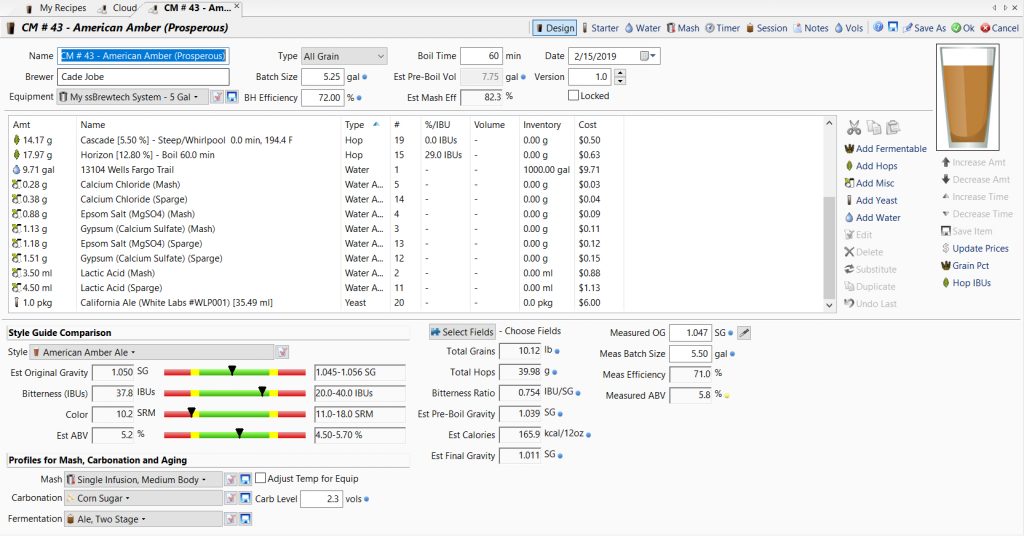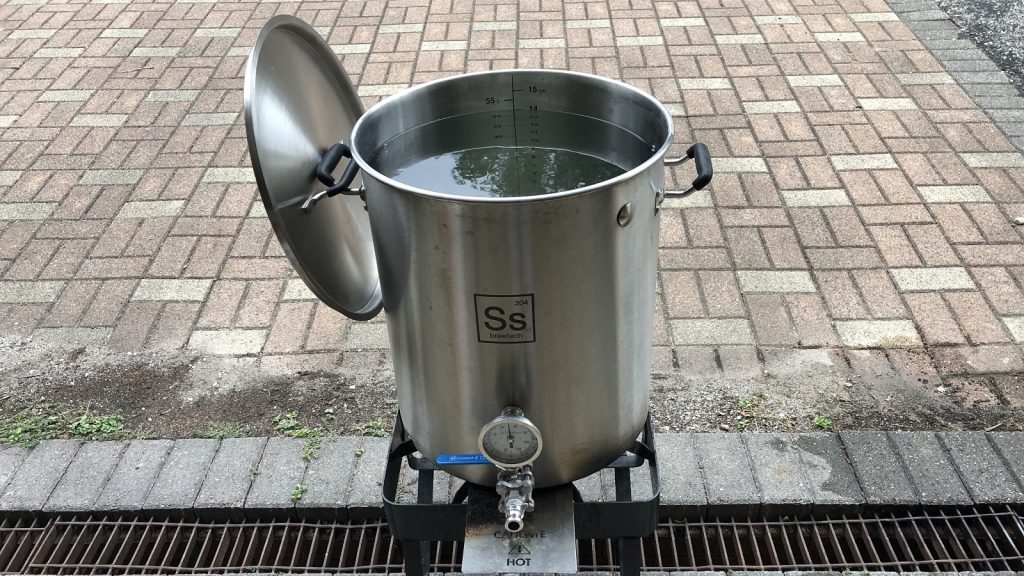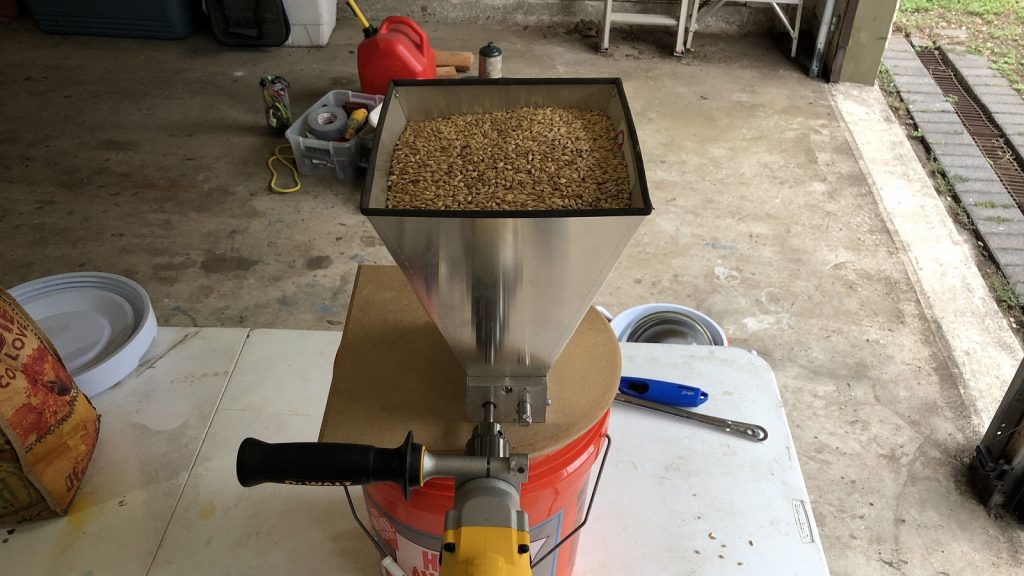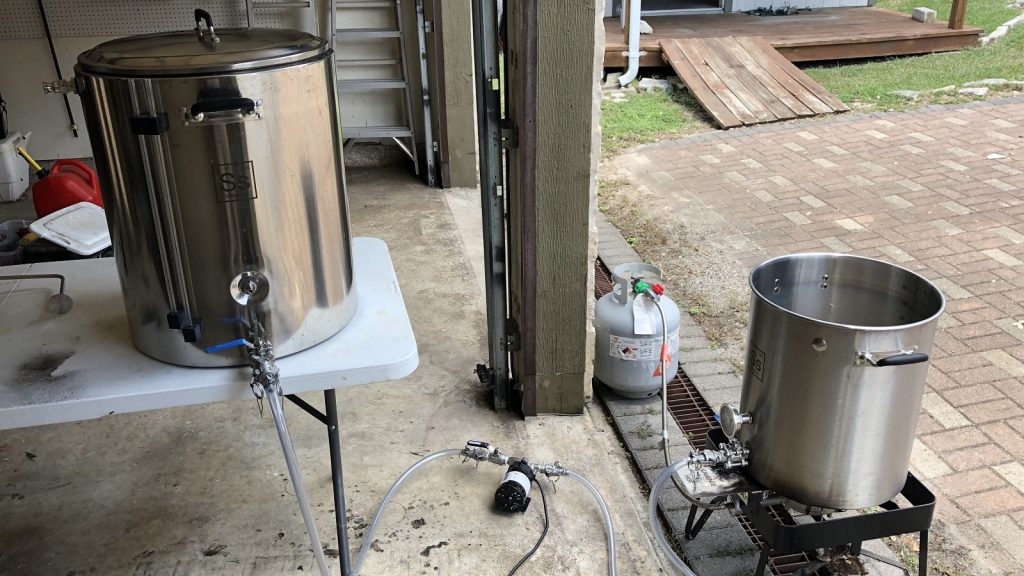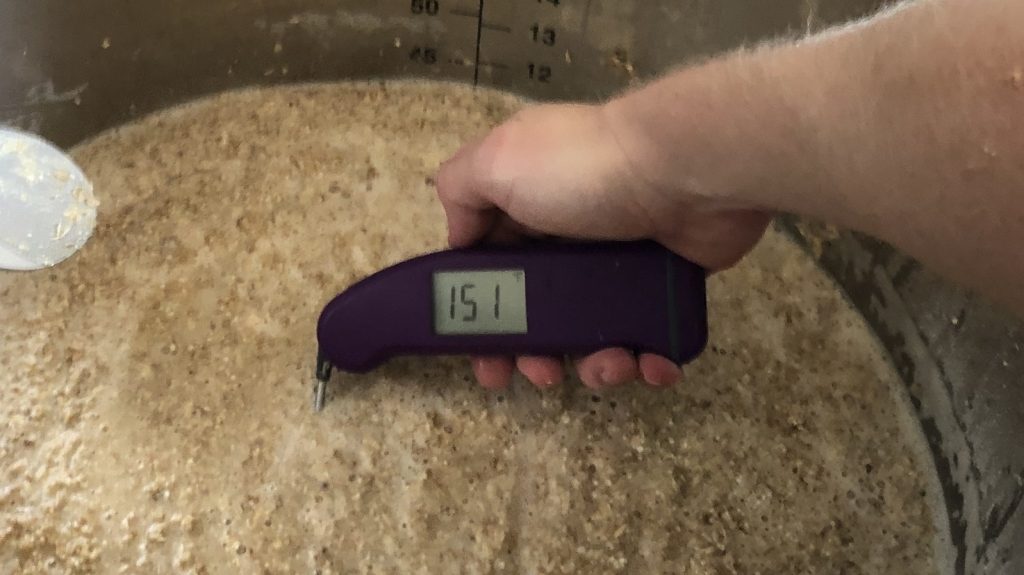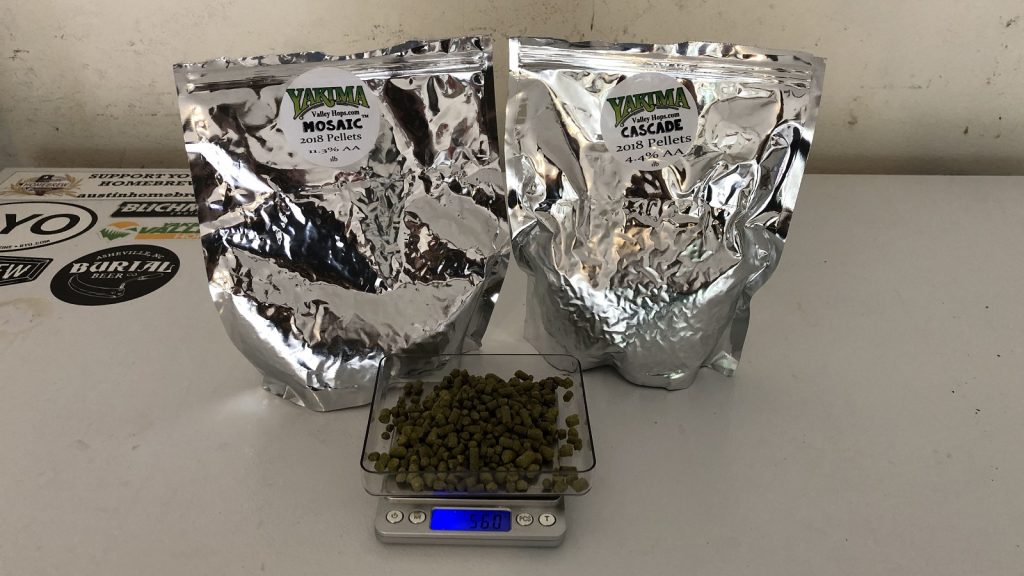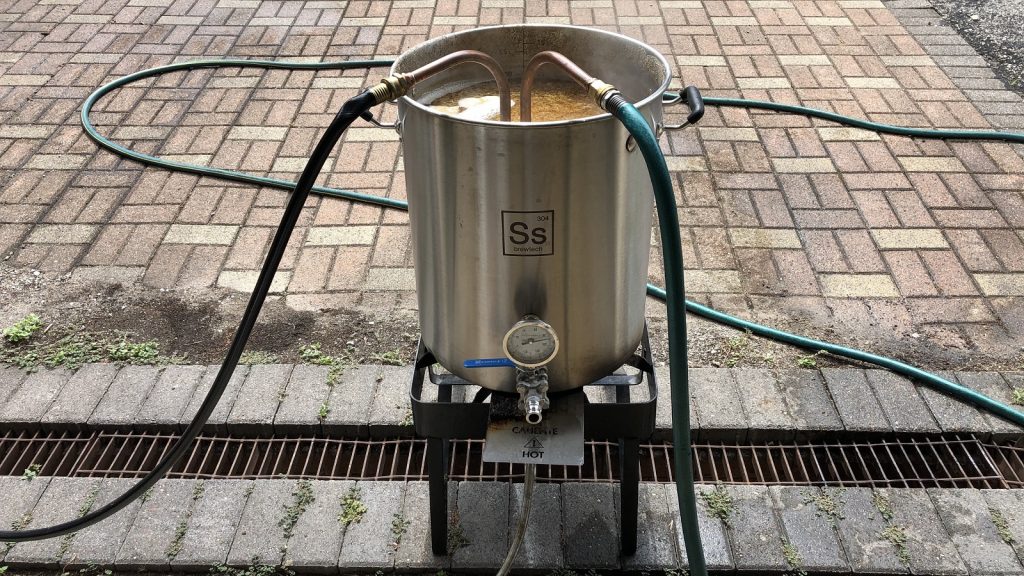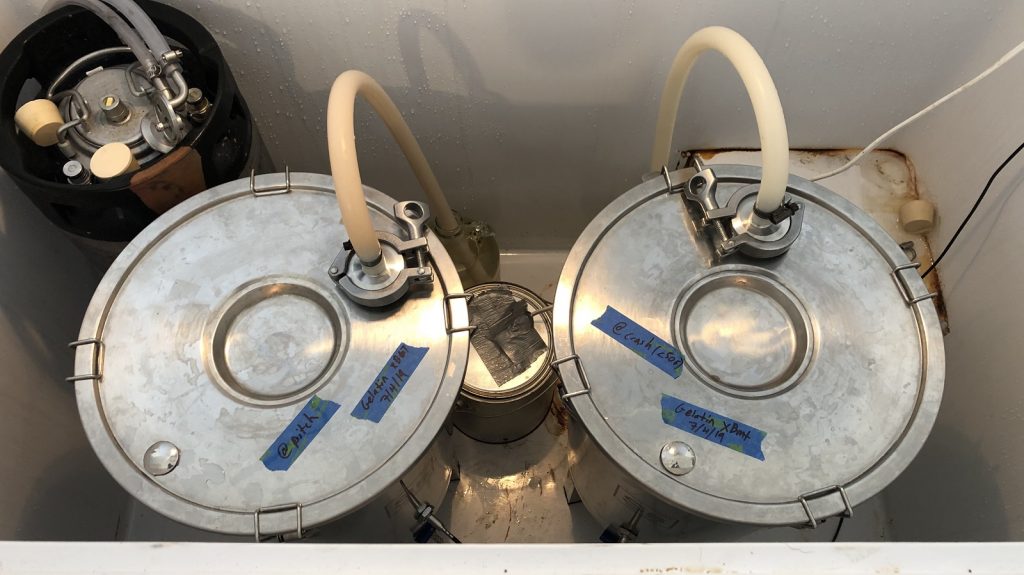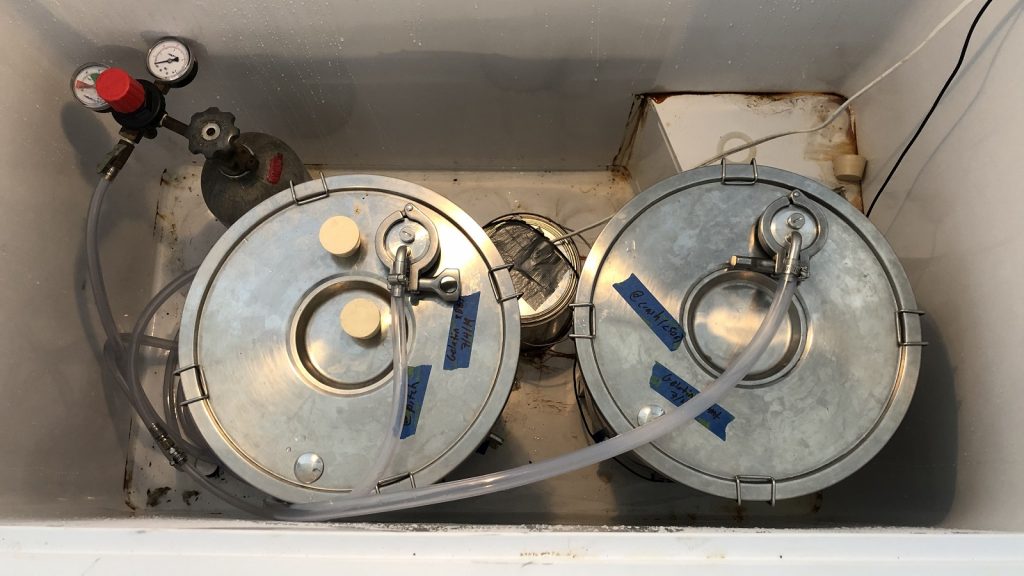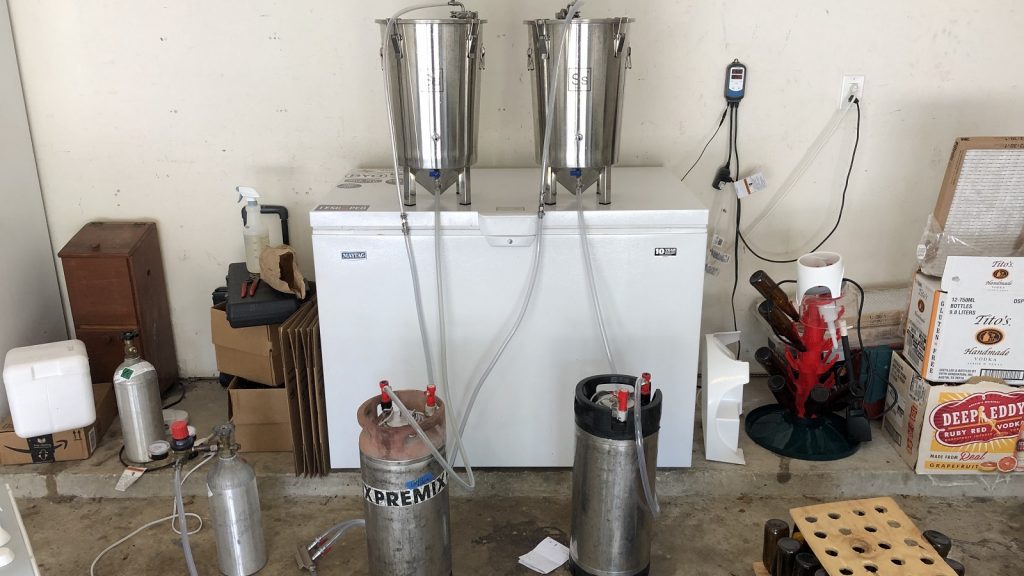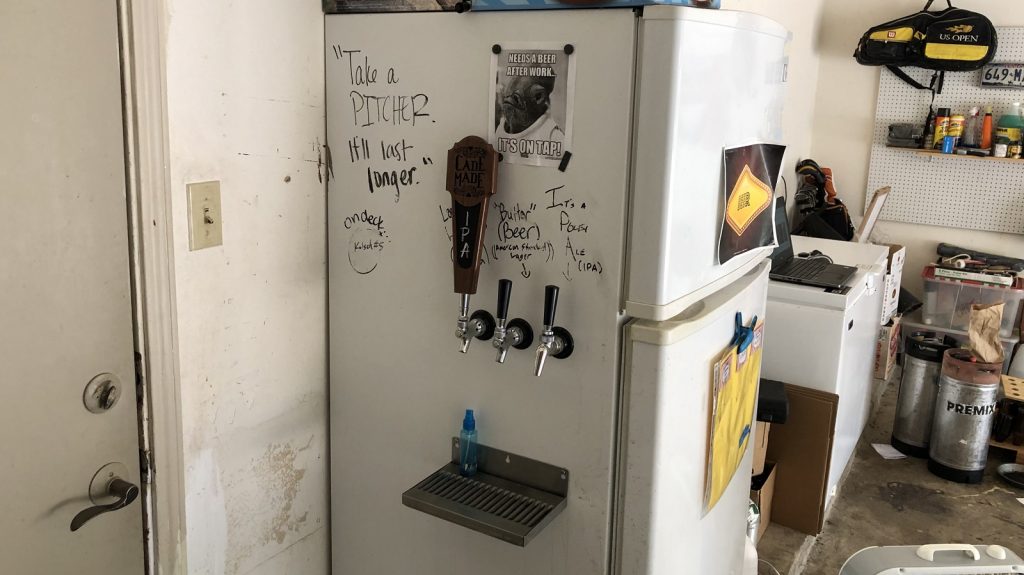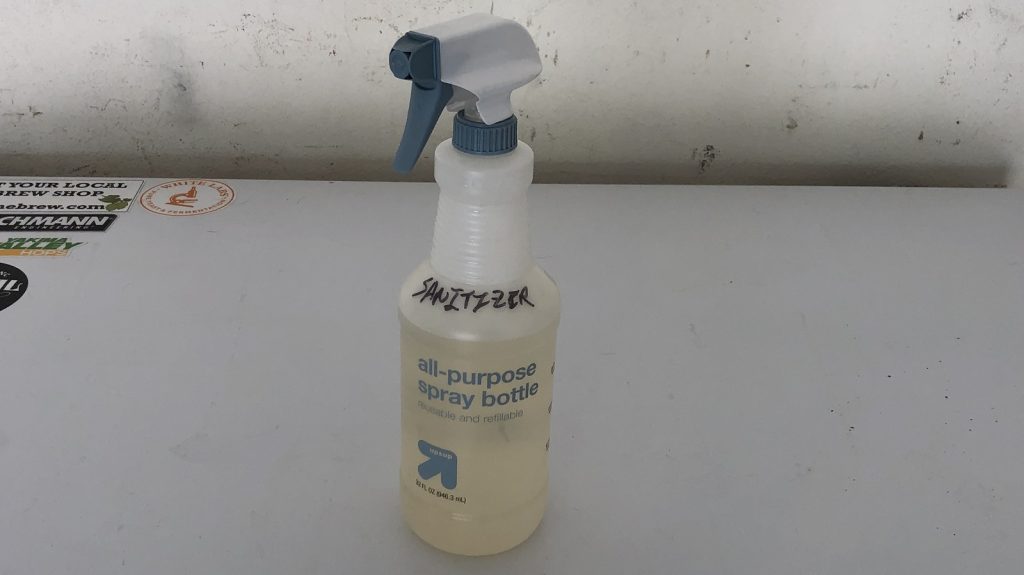 Cade was born and raised in Texas. He loves three things, but not necessarily in this order (at least, not always): Longhorn football (#hookem), brewing beer, and spending time outdoors with his wife, son, and two dogs. He feels lucky to live in Austin, the best city in Texas, where craft beer is thriving and the homebrewing community is vibrant. He’s a Certified Cicerone, BJCP Certified Beer Judge, and is an active member in both The Brü Club and Austin ZEALOTS.
Cade was born and raised in Texas. He loves three things, but not necessarily in this order (at least, not always): Longhorn football (#hookem), brewing beer, and spending time outdoors with his wife, son, and two dogs. He feels lucky to live in Austin, the best city in Texas, where craft beer is thriving and the homebrewing community is vibrant. He’s a Certified Cicerone, BJCP Certified Beer Judge, and is an active member in both The Brü Club and Austin ZEALOTS.
| ABOUT CADE |
How did you get into brewing?
A close friend bought me a Mr. Beer kit for Christmas because he knew I enjoyed cooking and craft beer. After the first batch, I was hooked. I started by doing about a dozen extract brews before moving to all-grain.
What was your first batch and how did it turn out?
I made beer! To be honest, I don’t remember much about it or even what style it was, but I do remember the way one of my friends described it when politely declining a second pour– “Not my style.” Haha. Thankfully, it was only 10 or 12 bottles, which I drank happily. The second batch though… let’s just say I learned early that “cleanser” is not the same thing as “sanitizer.” Still, I kept at it and am glad I did!
How did you get involved with Brülosophy?
Ultimately, it was through my involvement with The Brü Club. I’ve always enjoyed looking at the science behind brewing and had been following Brülosophy for several years. When the opportunity came to contribute by way of The Brü Club xBmt series, I jumped at it and had a couple articles published on the site. I met Marshall in person during the BYO Boot Camp in Asheville, NC, we talked about my interest in continuing with experimentation, and the rest is history. Soon after I got home, I was invited to join the crew. In addition to being a full-fledged Brülosophy contributor, I remain actively involved with The Brü Club.
What xBmt has surprised you the most?
Pretty much all of the water chemistry xBmts have surprised me. We spend so much time focusing on finding the best combination of hops, malt, and yeast, or on employing the best brewing practices, but we sometimes forget that beer is mostly water. The water chemistry xBmts have probably impacted my brewing practices more than any other, and I’ve come to wholly accept that water is just as important as the other ingredients. Also, I’m fascinated by the interaction of ingredients at the micro level.
Have the xBmts influenced your current brewing perspectives?
Yes, the xBmts have influenced my current brewing perspectives, but I wouldn’t say they’ve overly influenced my current brewing practices (except for the water-related ones). I’ve been mostly a solo brewer, so I’ve relied heavily on books and the internet to help me out along the way. There is so much prescriptive advice about recipe design, brewing equipment, etc. I love seeing those ideals challenged in a meaningful way through the xBmts. Still, I fly sparge (no BIAB), mash and boil for 60 minutes (sometimes 90!), control my fermentation temperatures, manage mash pH, and let my lagers sit for at least 30 to 45 days before drinking.
What are your 3 favorite styles of beer?
This is a difficult one for me because my favorites are so fluid!
Kölsch
I always have one on tap. To me, there’s nothing better than a crisp, dry Kölsch on a hot Texas afternoon. In my opinion, it’s one of the more approachable craft beers for those of us who started out drinking American Light Lager. And, I’m sorry y’all, but when it’s over 90°F/32°C everyday for at least three months out of the year, I don’t want a west coast (or New England) hop-bomb or a thick, high ABV Stout. I want something that’s crisp, refreshing, and crushable, and Kölsch fits that bill (along with light lager).
American Amber
My other go-to beer. Solid caramel malt character, clean, and a little on the hoppy side. Mmm mmm good. Thirsty Planet’s Thirsty Goat is a great example if you’re ever in Austin.
Whatever beer I’m drinking…
Cliché, I know, but it’s the truth. I enjoy all styles of beer and love trying new things. I have my go-tos, but they’re not limited to style. Totally depends on the situation– the food, the company, and the atmosphere all blend together to make the perfect beer for the occasion.
What are your favorite ingredients?
Malt: Maris Otter
Cheddar crackers. I know, I’m weird, but that’s what it tastes like before fermentation, and I love the cracker and toast flavors in the finished product. It’s an expressive malt that packs a punch, even in limited quantities.
Hops: German Tettnang
The soft spiciness and subtle aroma make this a wonderful hop to brew with. If I could, I’d put that shit in everything!
Yeast: Style dependent
This is such a tough one for me because I like so many strains for different reasons. The Chico strain is an obvious a winner for its versatility with American style ales, Imperial Yeast G03 Dieter produces a wonderfully crushable beer under the right conditions, Imperial Yeast L17 Harvest is my go-to lager strain, and Imperial Yeast B48 Triple Double gets an honorable mention for Belgian styles.
What’s your desert island beer?
St. Arnold’s Lawnmower. Did I mention I like Kölsch?
What music do you listen to while brewing?
I like to mix it up, but I’m a top 100 kind of guy. Most of the time it’s top country, classic rock, or straight top 100 (all genres).
What else do you enjoy doing besides brewing?
Spending time with my wife, son, and dogs. We love to travel and do things outdoors, like hiking and just generally finding new places to explore.
If you could go back, what brewing advice would you give yourself?
“Chill the eff out! It’s gonna be okay. Relax Don’t Worry Have A (beer, until you make a good) Homebrew.” Initially, I put so much weight into brewing in the prescribed manner, following instructions to the letter, that I lost sight of the fun that is making beer. It takes time and practice to make good beer. The worst thing you can do to a hobby is freak out when things don’t go according to plan. This is about having fun and making beer. RDWHAHB.
| BREWING GEAR & PROCESS |
I’m currently using a propane setup that can handle 12 gallon batch sizes, though I’ll be going electric in the near future.
Pre-Brew Preparation
I start every batch my designing a recipe in BeerSmith 3.
Thankfully, I have good tap water at my house, so no need for a RO filter, though I do occasinally check it myself using a LaMotte BrewLab Test Kit. After collecting water in my Ss Brewtech brew kettle, I use a combination of BeerSmith and Bru’n Water to determine the minerals to add to achieve my desired profile.
With the water taken care of, I proceed with weighing out and milling the grain, usually just prior to mashing in, though occasionally the night before.
If I’m not direct pitching yeast or relying on a vitality starter, I’ll make a starter a day or two ahead of time using a 2 liter Erlenmeyer flask and a few drops of Fermcap-S to keep boilovers at bay.
Brewing
On brew days, I use a Bayou Classic 14-inch burner to heat the full volume of water in my Ss Brewtech 15 gallon brew kettle. From there, I use a Chugger pump to transfer the mash volume to a Ss Brewtech 20 gallon InfuSsion MLT.
Once the grain is fully incorporated, I use a Thermapen Mk4 to check the mash temperature.
After about 15 minutes, I steal a little wort off the top to check the mash pH. Toward the end of the mash rest, I make sure the remaining water in my kettle is at sparge temp then transfer it to my other InfuSsion where it sits until the mash is complete. This is also when I measure out the kettle hop additions.
I fly sparge, so once the mash is complete, I use a Chugger pump to vorlauf and settle the grain bed before hooking the pump to the kettle to draw off wort while the sparge water is gently showered over the grains. When the proper volume of wort is in my kettle, I hit the flame to bring it to a boil, start my timers, and make kettle hop additions as necessary. When the boil is complete, I use a JaDeD Brewing King Cobra immersion chiller to quickly drop the temperature.
I then rack the chilled wort to Ss Brewtech Brew Buckets that get placed in my chest freezer fermentation chamber where the temperature is regulated with an Inkbird controller and paint can heater.
Packaging & Serving
Once the beer is done fermenting, I hit the Brew Bucket with 2 psi of CO2, which is made very easy with the conversion kit sold by Ss Brewtech, then reduce the temperature to 33°F/0.5°C for cold crashing.
After a day or two of cold crashing, I pressure transfer the beer to sanitized and CO2 purged kegs.
The filled kegs get placed in my 3-tap kegerator where I usually burst carbonate around 40 psi overnight before reducing the gas to serving pressure.
For some styles, I’m a fan of letting the beer condition at serving pressure, which is 12 psi for me, for several weeks before serving.
Cleaning & Sanitation
I generally use OxiClean Free or Powdered Brewery Wash (PBW) to make sure everything is clean and spotless. I alternate using Star San and Iodophor for sanitizing, keeping a spray bottle around for spot sanitizing.
Other Stuff
I keep my hops sealed and in the freezer except for the short period of time it takes to measure them out on brew day.
If you’re ever in Austin, hit me up and we’ll grab a beer! Seriously, y’all.
Contact Cade via email at cade@beerconnoisseur.local and feel free to leave any questions in the comments section below! A regularly updated version of Jake’s process and gear can be found on his contributor page.
Brülosophy Merch Available Now!
Follow Brülosophy on:
FACEBOOK | TWITTER | INSTAGRAM
If you enjoy this stuff and feel compelled to support Brulosophy.com, please check out the Support page for details on how you can very easily do so. Thanks!

